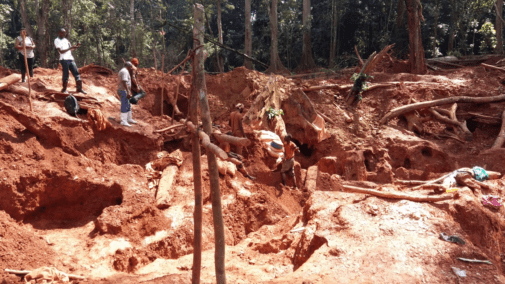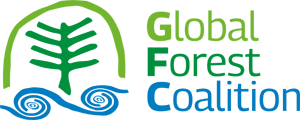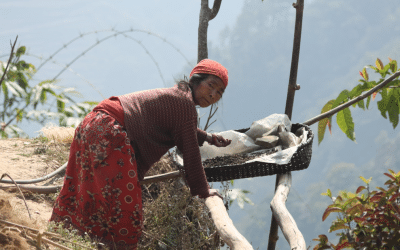Le côté obscur de la technologie : l’extraction du coltan en RDC et son impact sur les droits de l’homme et l’environnement
By Allie Constantine et Ismail Wolff
Le coltan, officiellement appelé colombite-tantalite, est un minéral crucial dans la production de la plupart des appareils technologiques modernes, tels que les téléphones mobiles, les ordinateurs portables et les voitures. Cependant, l’exploitation du coltan en République démocratique du Congo (RDC) a suscité de vives inquiétudes en raison des violations flagrantes des droits de l’homme et de la dégradation de l’environnement qu’elle entraîne. Le développement de la recherche et de la couverture de l’exploitation minière a mis en lumière un réseau complexe de problèmes liés à l’exploitation du coltan, en faisant la lumière sur son impact sur les communautés et les écosystèmes de la RDC.
Continuer en anglais…
Coltan, short for columbite-tantalite, is a crucial mineral in producing most modern technological devices such as cellphones, laptop computers, and cars. However, the extraction of coltan in the Democratic Republic of Congo (DRC) has raised significant concerns due to its severe human rights violations and environmental degradation. Increasing research and coverage of the mining has exposed an intricate web of issues surrounding coltan mining, shedding light on its impact on communities and ecosystems in the DRC.
The situation in the DRC ties in with the considerable body of work by the Global Forest Coalition and its members under its Extractive Industries, Tourism and Infrastructure (ETI) campaign. The ETI campaign covers mainly the Global South in supporting Indigenous Peoples and diverse local communities depending on forests in their struggle against the injustices created by multinationals from countries such as The DRC, Ghana and Uganda across to the Dominican Republic, Colombia, India, and Nepal.

A scene from an artisanal mining site
in DRC. Photo Credit: Programme Intégré pour le
Développement du Peuple Pygmé (PIDP)
GFC’s flagship publication, Forest Cover 67, produced six case studies on extractivist projects in India, Armenia, Kyrgyzstan, Ghana, Liberia, and the DRC, showing how corporations and their nefarious resource extraction activities are directly threatening forest ecosystems and landscapes that have long been important to Indigenous and local communities. The report also describes the feminist perspective that we take on the issue of extractivism and that inspired the research.
In a context of record forest loss, with a climate and biodiversity crisis that requires urgent action, it is essential to look at the global and the local in tandem and to really see what solutions are out there if we listen to local perspectives and knowledge.
Environmental Degradation:
Extensive research has linked coltan mining in the DRC to large-scale environmental degradation, with devastating consequences for the region. The Global Forest Watch platform reveals that the DRC has lost 8.6% of its tree cover since 2000, and mining, particularly coltan extraction, is identified as a major driver of deforestation. Disturbingly, environmental impact assessments are rarely conducted before coltan mining, leading to the violation of historical heritage sites, such as the Kahuzi Biega National Park.
Artisanal miners, lacking state control on most sites, often disregard regulations, digging deeper than recommended and causing further environmental damage. The manual process of mineral separation involves washing in streams and rivers, using chemicals that pollute water bodies and produce radioactive substances harmful to aquatic life and human health. We also know that women and people with uteruses are often the most directly impacted by this form of pollution, as it often targets reproductive systems and impacts breast milk composition, which in turn impacts health outcomes of future generations.
Human Rights Abuses:
The exploitation of coltan mines by the associated businesses and local and global governments in the DRC has resulted in severe human rights abuses, perpetuating a cycle of poverty and violence. Despite being a statutory requirement under mining laws, coltan mining businesses rarely compensate affected communities. The absence of these compensations exacerbates the impoverishment of communities involved in or affected by coltan mining, leaving them even more vulnerable to violence and displacement. Shockingly, despite reforms in the DRC’s mining code in 2017 to penalize child labour, over 40,000 child miners continue to illegally toil in dangerous conditions, including as washers and diggers, extracting coltan.
“People are being forcibly evicted, or threatened or intimidated into leaving their homes, or misled into consenting to derisory settlements. Often there was no grievance mechanism, accountability, or access to justice.”
Multiple cases of forced evictions and grievous human rights abuses at the hands of local government authorities and mining corporations have been documented and linked to the expansion of industrial-scale cobalt and copper mines in the DRC. A recent report by the DRC-based organisation Initiative pour la Bonne Gouvernance et les Droits Humains (IBGDH) and Amnesty International, “Powering Change or Business as Usual?” details how multinational companies’ scramble for mining operations has resulted in communities being forcibly evicted from their homes and farmland. The report, published in September 2023, exposes the gendered impacts of these violations, including sexual assault, arson, and beatings, as part of these egregious human rights violations.

Refugees from conflict in the eastern Democratic Republic of the Congo leave the Nyakabande transit camp in Uganda for an eight hour journey to Rwamwamja refugee settlement, further into southwest Uganda. Andy Wheatley/DFID. April 2013
Donat Kambola, president of IBGDH, said: “People are being forcibly evicted, or threatened or intimidated into leaving their homes, or misled into consenting to derisory settlements. Often there was no grievance mechanism, accountability, or access to justice.”
The forced evictions and human rights abuses associated with cobalt and copper mining underscore the urgency of addressing the broader implications of the mining industry in the DRC. Government authorities and mining companies are misleading communities into consenting to inadequate settlements, and there is a blatant disregard for legal safeguards. It is important that every project to be implemented in a community meet the requirements of free, prior and informed consent by those impacted, ensuring the community’s right to reject any destructive projects.
Violent Conflict and the Role of International Actors:
The history of coltan mining in the DRC is marred by conflict, political turmoil, and exploitation. The “African World War” in the late 1990s resulted from power struggles over the valuable ore, involving multiple African nations and rebel groups. Conflicts over natural resources in the DRC remain common and regularly escalate into violence and loss of life, as stakeholders often turn to armed groups or state security forces to protect their claim to land or resources. Additionally, the exploitation of minerals by (foreign) companies in eastern DRC has led to social tensions and has spurred armed group activity on multiple occasions.
The human rights abuses and environmental degradation associated with coltan mining in the DRC demand immediate attention and action.
A November 2023 update by the Center for Preventative Action warned of a spike in violence and high rates of civilian casualties and displacement due to clashes involving “militant groups over territory and natural resources, extrajudicial killings by security forces, political violence, and rising tensions with neighbouring countries.” Nearly 7 million people are currently internally displaced in the country due to the threat of violence and atrocities, extreme poverty, and mining expansion.
The DRC’s abundance of natural resources—especially precious minerals—has globalized the conflict in eastern DRC, with the Congolese army frequently deployed to mining sites in eastern DRC to protect Chinese assets. China’s dominance in the global cobalt market, dating back to a 2009 deal with the Congolese government, has further complicated the situation. Chinese companies not only control mining concessions on the ground but also dominate the entire supply chain up to the battery level. This level of control raises concerns about the ethical and environmental standards applied throughout the production process.
GFC’s latest briefing paper, Debt, Displacement, and Biodiversity Loss: Assessing the Gender, Environmental, and Human Rights Implications of China’s Belt and Road Initiative, also found that the controversial Belt and Road Initiative (BRI), an ambitious global development strategy led by China which claims to change trade and infrastructure for the better across participating countries, has significant and severe negative impacts on women, Indigenous Peoples, local communities, human rights, and the environment.
The paper, which analysed BRI projects in Kenya, Indonesia, and Argentina, found that the initiative has led to human rights violations, and environmental destruction, and has been initiated without any gendered impact analyses or consultations with affected communities.
The human rights abuses and environmental degradation associated with coltan mining in the DRC demand immediate attention and action. International cooperation, transparent mining practices, and adherence to ethical standards throughout the supply chain are essential to mitigate the devastating impact of coltan extraction on both people and the environment. As consumers, understanding the dark side of the technology we use can empower us to advocate for responsible sourcing and contribute to positive change in the global mining industry.
Moreover, the insatiable hunger for new technology and capitalistic growth is fuelling this crisis. As consumers, we need to make changes at an individual level as well by focusing on the longevity of our technology and rejecting the constant barrage of unnecessary upgrades to our technology. Putting pressure on our governments and the industry to be more transparent will become more imperative. As global awareness about the horrific conditions created by material mining grows, change can be enacted.




